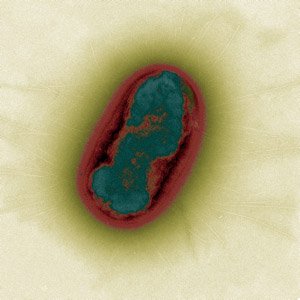Stealth technology maintains fitness after sex
 Pathogens can become superbugs without their even knowing it, research published today in Science shows. ‘Stealth’ plasmids – circular DNA ‘parasites’ of bacteria that can carry antibiotic-resistance genes – produce a protein that increases the chances of survival and spread of the antibiotic-resistant strain.
Pathogens can become superbugs without their even knowing it, research published today in Science shows. ‘Stealth’ plasmids – circular DNA ‘parasites’ of bacteria that can carry antibiotic-resistance genes – produce a protein that increases the chances of survival and spread of the antibiotic-resistant strain.
Low-cost plasmids, described for the first time in the study are a threat to the use of antibiotics.
Plasmids are naturally occurring ‘DNA parasites’ of many bacterial species and have been known about for over 30 years. Some are able to transfer themselves from one bacterial cell to another through a sex-like process called conjugation, contributing to bacterial evolution. Worryingly, as well as copying themselves plasmids can pick up and transfer bacterial genes, such as those that make pathogens resistant to antibiotics.
However, the plasmid comes at a cost to the host bacterium: gaining a plasmid can reduce the host’s ability to grow and reduce its fitness. When antibiotic treatment is stopped, the new microbe-plasmid combination will be eliminated quickly through fierce competition from more ‘fit’, plasmid-free bacteria.
The research teams, led by Professor Charles J. Dorman at Trinity College Dublin, Ireland, and Dr John Wain at the Wellcome Trust Sanger Institute in Cambridge, UK, have discovered that an important class of plasmids use a stealth gene (called sfh) to allow entry into a new bacterium with minimal reduction in fitness.
With the low-cost version of the resistance plasmid they have described in Salmonella, resistant bacteria are likely to survive and the resistance genes to persist even if antibiotic therapy is stopped.
Their research shows that sfh codes for a protein that is very similar to another bacterial protein: the role of which is to organise the genetic material within each bacterium and control activity of many genes, including those involved in causing disease. The sfh protein binds to the new plasmid DNA, preventing its detection by the bacterium.
“The bacterial protein, called H-NS, is a very important molecule and affects the way a bacterial pathogen operates. By bringing in its own supply of the H-NS-like stealth protein (called Sfh), the plasmid avoids interfering with the natural balance of H-NS and DNA in the cell.
“Our work suggests that bacterial fitness can be manipulated by altering the proportions of H-NS and DNA in the cell, perhaps through the use of drugs, an insight that may be exploited in the future to prevent or to fight infection.”
Professor Charles J. Dorman at Trinity College Dublin Ireland
Bringing its own supply of the host-like protein is clearly an advantage for the plasmid, suggesting that the normal supply of H-NS in the bacterium may become limited when new DNA is imported. If a modified plasmid, lacking the sfh gene, is transferred to Salmonella, the effects of the plasmid are very rapidly detected.
Bacteria can acquire and transfer resistance genes through a variety of methods, but this new study shows how a single gene has the potential to increase dramatically the chance of successful – and health-threatening – transfer and survival of a battery of antibiotic-resistance genes.
The consequences for managing disease – especially in developing countries – are significant.
“These plasmids are found in many pathogenic bacteria including those that cause typhoid and paratyphoid fever. Both of these diseases are increasing in the developing world and in the UK we are seeing more and more imported cases.
“But understanding is not enough: we now need to exploit this information to try to prevent the plasmid spreading any further.”
Dr John Wain at the Wellcome Trust Sanger Institute
More information
Funding for this work
This work was supported by a grant from Science Foundation Ireland to Professor Dorman. Work at the Sanger Institute was supported by the Wellcome Trust.
Publications:
Selected websites
Trinity College Dublin (TCD)
Trinity College Dublin (TCD) is located on a 47-acre site in the centre of Dublin and is the sole constituent College of the University of Dublin. Founded in 1592, it is Ireland’s oldest university and is the leading research university in the country. Just over one third of its research income comes from Science Foundation Ireland. TCD employs 828 academic staff and has over 15,000 students of which approximately one third are postgraduates.
The Wellcome Trust Sanger Institute
The Wellcome Trust Sanger Institute, which receives the majority of its funding from the Wellcome Trust, was founded in 1992. The Institute is responsible for the completion of the sequence of approximately one-third of the human genome as well as genomes of model organisms and more than 90 pathogen genomes. In October 2006, new funding was awarded by the Wellcome Trust to exploit the wealth of genome data now available to answer important questions about health and disease.
The Wellcome Trust and Its Founder
The Wellcome Trust is the most diverse biomedical research charity in the world, spending about £450 million every year both in the UK and internationally to support and promote research that will improve the health of humans and animals. The Trust was established under the will of Sir Henry Wellcome, and is funded from a private endowment, which is managed with long-term stability and growth in mind.


